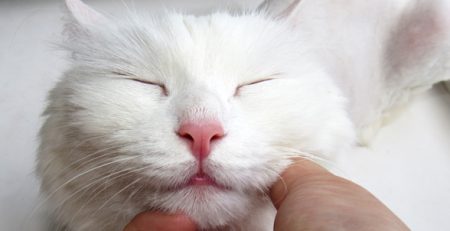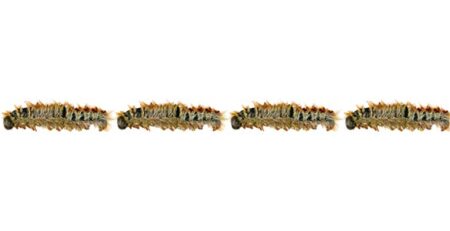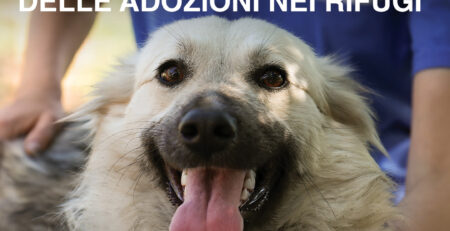Dog and cat fleas: how to recognize them, what diseases they transmit, and how to protect your four-legged pets and your home from infestations.
Dog fleas and cat fleas: these parasites are present all year round, not just during warm weather.
Here’s how to recognize them to defend and protect your four-legged friends from the diseases they transmit.
Fleas are pest pests.
Flea infestation is the most common external parasitosis of dogs and cats.
It is important to subject dogs and cats to pesticide treatment throughout the year and even more scrupulously in spring and during the summer season, diligently observing monthly application and dosing intervals.
What do fleas look like and what do they look like?
They are tiny, dark reddish-brown insects that lack wings but are exceptionally adept at jumping.
They creep into the animal’s dense fur and deposit their eggs there and also their excrement, tiny dark-colored grains that signal their presence.
When do flea eggs hatch?
Adult fleas are parasites that feed on the blood of the host animal.
They can suck an amount of blood equal to 15 times their body weight.
Their life cycle lasts 2-3 weeks on average.
They live and mate on the host animal without ever leaving it unless we are “forced” to do so.
During the course of a single day and for several weeks, a single female flea can lay up to 50 eggs.
The eggs are laid on the animal’s coat but also end up falling and scattering on the ground in the house or in the animal’s own environment.
Under hot and humid weather conditions, the eggs hatch in a few days, releasing flea larvae.
What causes fleas in dogs?
Itching
: is the most common consequence. A single flea can sting more than 100 times a day. The resulting annoyance drives the animal to scratch or bite so obsessively to the point of causing even very serious scratching lesions (dermatitis, alopecia, wounds), which can then become infected.
Anemia
: By sucking blood, even up to 14-15 ml per day, fleas debilitate the animal to the point of anemia, that is, a decrease in red blood cells.
Allergic reactions
: Some particularly sensitive animals may develop allergic dermatitis from flea bites and manifest bleeding wounds, even with pus, and hair loss.
Transmission of tapeworms: flea larvae, once they emerge from the egg, feeding on the skin debris and feces of adult fleas, can also ingest tapeworm eggs and then harbor them inside, where they are stored until the larva in turn becomes an adult flea, and returns to the body of the animal from which it had fallen as an egg.
During cleaning, the dog or cat may ingest a flea, which being digested releases the tapeworm egg, which later develops in the animal’s intestines.
Do fleas attack humans?
Fleas can also sting humans, causing intense itching and in some particularly sensitive individuals, even allergic dermatitis.
A flea bite on humans is marked by a tiny dark spot surrounded by a reddened area.
What kills fleas?
To effectively treat dogs and cats, one must have products that are not only capable of killing fleas but also offer long-lasting protection in order to prevent re-infestations.
It is critically important to treat all cohabiting animals regularly because fleas jump from one animal to another.
There are many flea products on the market in pharmacies and specialty stores that are active against fleas.
The most common can be found in the form of sprays, vials and collars.
Never, under any circumstances, apply a dog pesticide to cats and vice versa: improper use of a product that is harmless to dogs can prove harmful if not downright lethal to cats.
Always consult your trusted veterinarian who, taking into account your pet’s age, weight and environmental situation, will recommend the most suitable product for both your four-legged friend and your home.
Where do fleas lurk in the home?
In infested human dwellings, larvae can settle in kennels, animal bedding, floor cracks, under carpets, in beds or carpeting, and in cars.
Larvae actively seek out moisture, avoid direct sunlight , and feed on organic debris from the environment such as feces produced by adult fleas, food debris, and fragments of skin or hair.
The larvae, these “latent” adults, when environmental conditions are optimal, represent an inexhaustible reservoir of parasites ready to suddenly infest a passing host and begin the life cycle anew.
How to get rid of fleas in the house?
To get rid of fleas and eggs, vacuum carpets, blankets and upholstered furniture (sofas, armchairs, pillows, beds), and throw the bag away immediately afterwards.
Always keep the animal’s bedding and sleeping areas clean, and wash textiles and linens at temperatures above 50°C (122°F).
To prevent the proliferation of fleas, use specific room sprays that work by creating a “shield” against external threats and inhibit the larval development of the dreaded pests.
The latest sprays are generally based on essences and essential oils of flowers and plants.
Remember, however, that the action of essential oils is repellent and NOT insecticidal.
Consult the doctors on our Staff and use the specific and most effective pesticides for your four-legged friend.
We also remind you that Clinica La Veterinaria is always open, every day including holidays, and with First Aid service from 8 pm to 8 am.
For the joy of seeing them happy.











